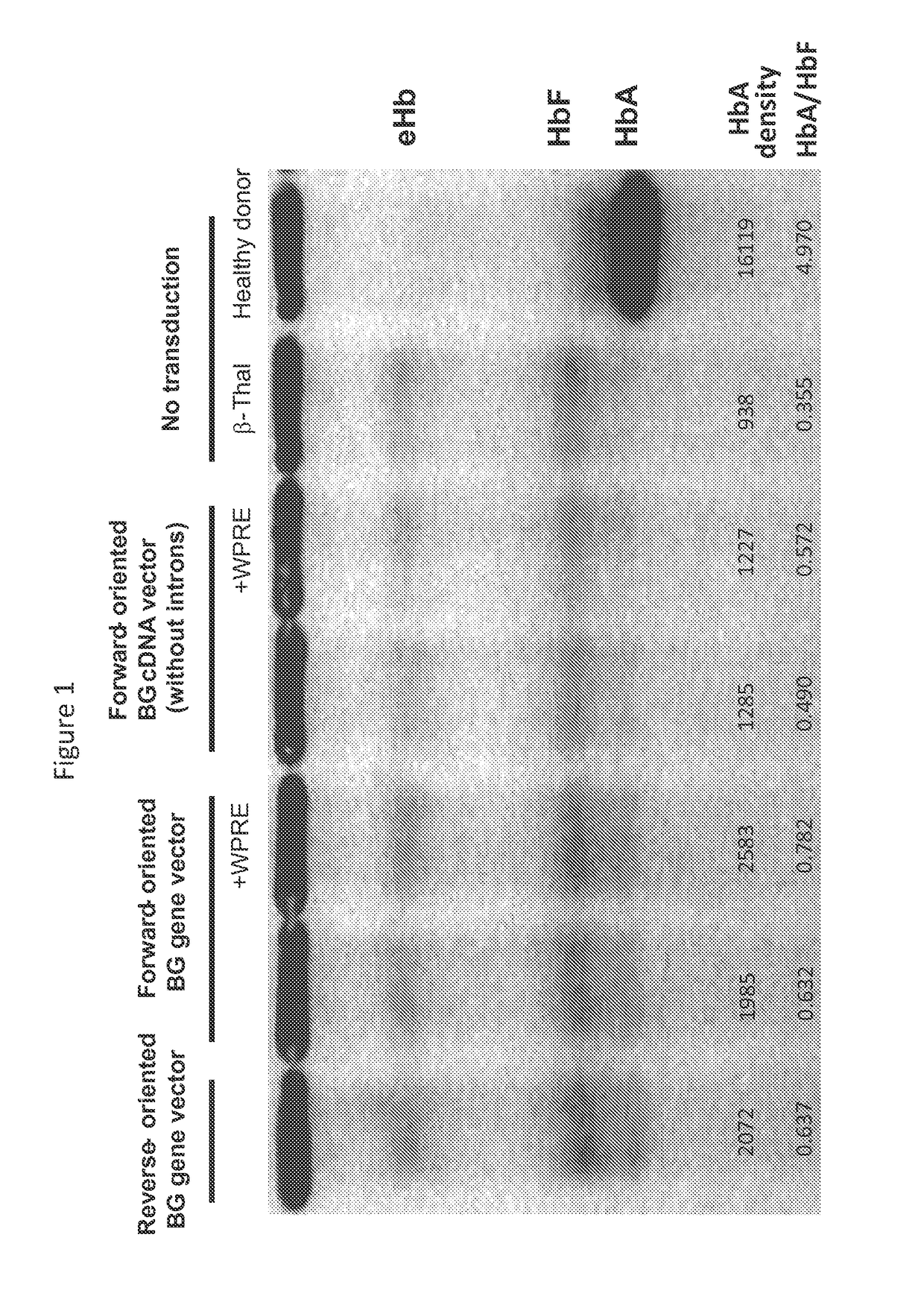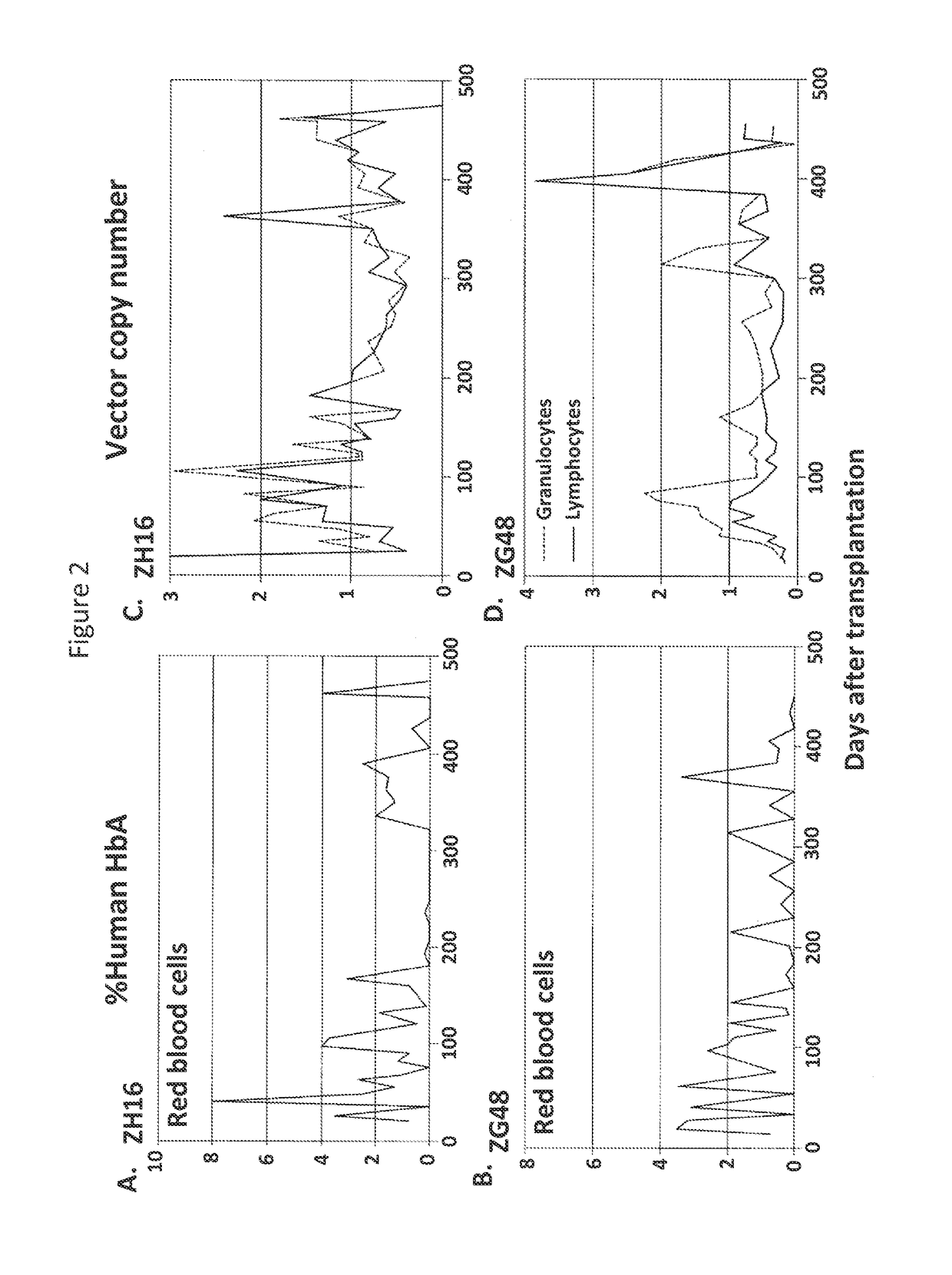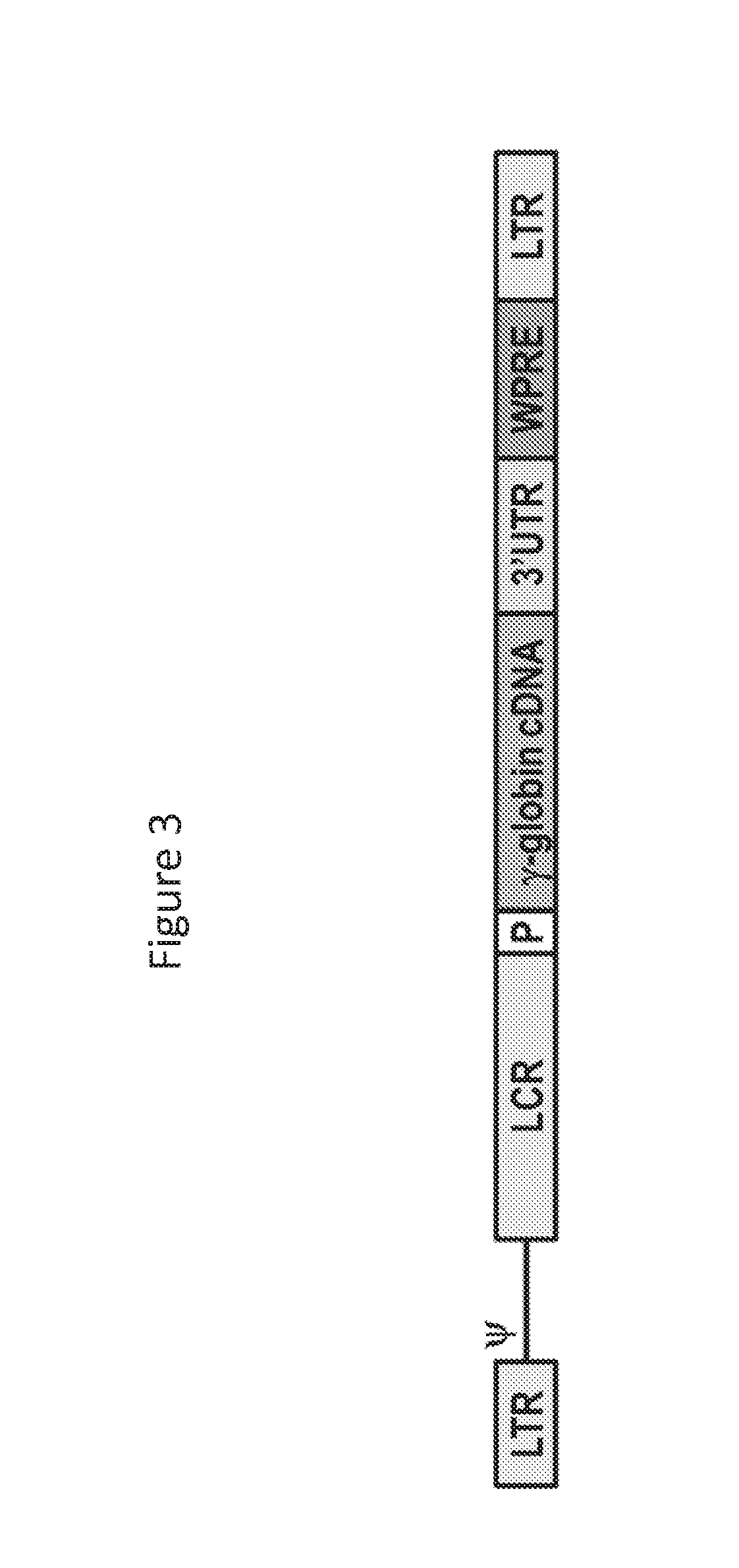Lentiviral vector for treating hemoglobin disorders
a lentiviral vector and hemoglobin technology, applied in the direction of viruses/bacteriophages, peptide/protein ingredients, genetic material ingredients, etc., can solve the problems of gvhd, significant risk of rejection, and no general cure for sickle cell diseas
- Summary
- Abstract
- Description
- Claims
- Application Information
AI Technical Summary
Benefits of technology
Problems solved by technology
Method used
Image
Examples
example 1
[0056]This example demonstrates the preparation of an inventive lentiviral vector comprising a forward-oriented nucleic acid sequence encoding a human β-globin protein, which can be grown at higher titers and transduces cells more efficiently than currently available reverse-oriented lentiviral vectors.
Plasmid Construction
[0057]To construct forward-oriented β-globin-expressing HIV-1 vector plasmids, a β-globin expression cassette was excised from a reverse-oriented globin-expressing lentiviral vector plasmid (May et al, Nature, 406: 82-86 (2000)), and the expression cassette was inserted into the same vector backbone in a forward orientation (i.e., 5′ to 3′) with respect to the lentiviral genome. The resulting forward-oriented (β-globin-expressing plasmids were optimized by including locus control region (LCR) elements, the native β-globin promoter, and a 3′ untranslated region (3′UTR) lacking the polyadenylation (poly A) signal. To positively select β-globin gene vectors that conta...
example 2
[0062]This example demonstrates a method of transducing human CD34+ cells with an inventive lentiviral vector expressing β-globin.
[0063]1×105 human CD34+ cells obtained from β-thalassemia patients were cultured on fibronectin-coated (RETRONECTIN™, TaKaRa, Otsu, Shiga, Japan) 12-well plates in 1 mL serum-free X-VIVO10 media (Lonza, Allendale, N.J.) containing stem cell factor (SCF), FMS-like tyrosine kinase 3 ligand (FLT3L), and thrombopoietin (TPO) (all 100 ng / ml; R&D Systems, Minneapolis, MN) (see, e.g., Uchida et al., Gene Ther., 18: 1078-1086 (2011)). After overnight prestimulation, CD34+ cells were transduced with the β-globin-expressing lentiviral vectors described in Example 1 at a multiplicity of infection (MOI) of 50 in fresh media containing SCF, FLT3L, and TPO. 24 hours later, transduced cells were differentiated into erythroid cells using erythropoietin for two weeks, as described in Migliaccio et al., Blood Cells Mol. Dis., 28: 169-180 (2002). Hemoglobin A expression was...
example 3
[0065]This example demonstrates a hematopoietic stem cell transplantation method using rhesus CD34+ cells transduced with an inventive lentiviral vector expressing β-globin.
[0066]Granulocyte-colony stimulating factor (G-CSF) and SCF-mobilized rhesus CD34+ cells were cultured in X-VIVO10 media containing SCF, FLT3L, and TPO on fibronectin-coated flasks (Uchida et al., J. Virol., 83: 9854-9862 (2009)). After overnight prestimulation, CD34+cells were transduced with the lentiviral vectors described in Example 1 (MOI=50) in fresh media containing SCF, FLT3L, and TPO for 24 hours. The transduced CD34+ cells were infused into irradiated rhesus macaques (10 Gy total body irradiation). After engraftment of transduced cells, expression of GFP, YFP, and human β-globin were evaluated by flow cytometry, while vector copy numbers were evaluated by real time PCR.
[0067]In two animals, GFP and YFP expression from both forward- and reverse-oriented lentiviral vectors was detected in red blood cells,...
PUM
| Property | Measurement | Unit |
|---|---|---|
| real time PCR | aaaaa | aaaaa |
| nucleic acid sequence | aaaaa | aaaaa |
| shape | aaaaa | aaaaa |
Abstract
Description
Claims
Application Information
 Login to View More
Login to View More - R&D
- Intellectual Property
- Life Sciences
- Materials
- Tech Scout
- Unparalleled Data Quality
- Higher Quality Content
- 60% Fewer Hallucinations
Browse by: Latest US Patents, China's latest patents, Technical Efficacy Thesaurus, Application Domain, Technology Topic, Popular Technical Reports.
© 2025 PatSnap. All rights reserved.Legal|Privacy policy|Modern Slavery Act Transparency Statement|Sitemap|About US| Contact US: help@patsnap.com



